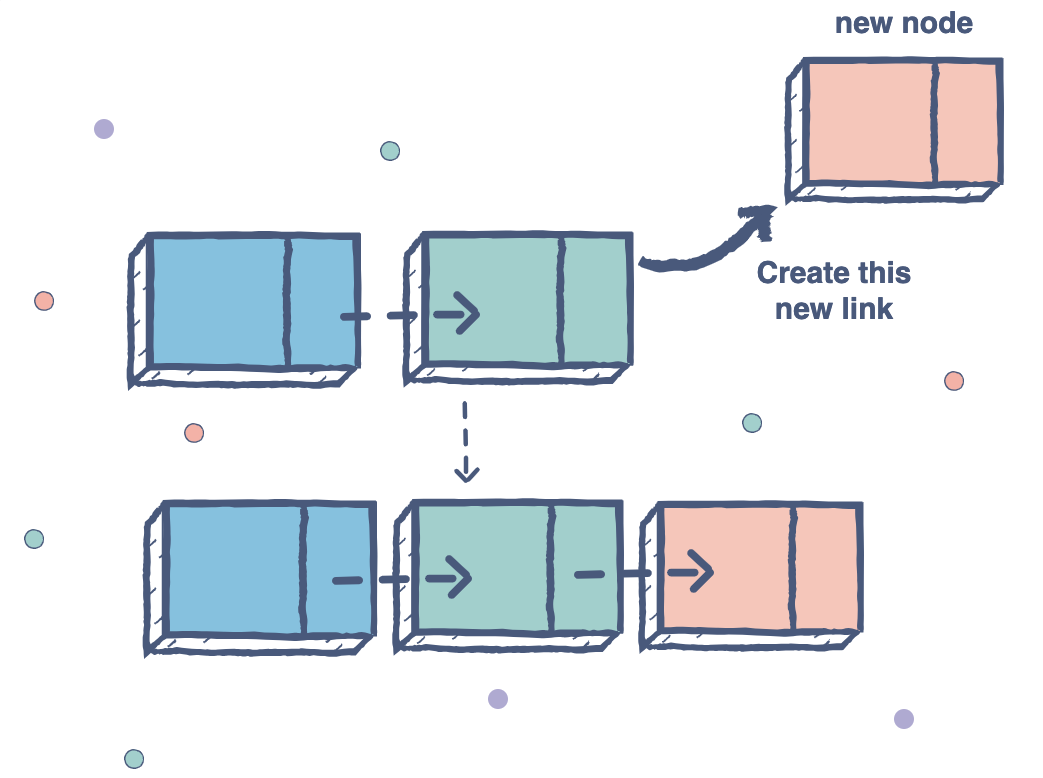Chào ace, bài này chúng ta sẽ tìm hiểu về Xoá node trong Linked List(danh sách liên kết đơn) trong series tự học về cấu trúc dữ liệu và giải thuật, sau đây cafedev sẽ giới thiệu và chia sẻ chi tiết(khái niệm, độ phức tạp, ứng dụng của nó, code ví dụ…) về nó thông qua các phần sau.
Trong các bài học trước, chúng ta đã tìm hiểu cơ bản về linked list và cách để chèn thêm một node mới vào linked list. Ở bài này chúng ta sẽ tìm hiểu về thao tác xóa một node khỏi linked list. Cho trước một ‘key’, hãy xóa đi sự hiện diện đầu tiên của key này trong linked list.
Để xóa một node khỏi linked list, chúng ta cần làm các bước sau:
1. Tìm ra node nằm trước node cần xóa
2. Thay đổi con trỏ next của node nằm trước node cần xóa đã tìm được ở bước 1
3. Giải phóng bộ nhớ của node cần xóa

Bởi vì mọi node của linked list đều được cấp phát động bằng hàm malloc() trong C, chúng ta sẽ cần phải gọi hàm free() để giải phóng bộ nhớ đã được cấp phát cho node cần xóa bỏ.
CODE VÍ DỤ
C/C++
// A complete working C program to demonstrate deletion in singly
// linked list
#include <stdio.h>
#include <stdlib.h>
// A linked list node
struct Node
{
int data;
struct Node *next;
};
/* Given a reference (pointer to pointer) to the head of a list
and an int, inserts a new node on the front of the list. */
void push(struct Node** head_ref, int new_data)
{
struct Node* new_node = (struct Node*) malloc(sizeof(struct Node));
new_node->data = new_data;
new_node->next = (*head_ref);
(*head_ref) = new_node;
}
/* Given a reference (pointer to pointer) to the head of a list
and a key, deletes the first occurrence of key in linked list */
void deleteNode(struct Node **head_ref, int key)
{
// Store head node
struct Node* temp = *head_ref, *prev;
// If head node itself holds the key to be deleted
if (temp != NULL && temp->data == key)
{
*head_ref = temp->next; // Changed head
free(temp); // free old head
return;
}
// Search for the key to be deleted, keep track of the
// previous node as we need to change 'prev->next'
while (temp != NULL && temp->data != key)
{
prev = temp;
temp = temp->next;
}
// If key was not present in linked list
if (temp == NULL) return;
// Unlink the node from linked list
prev->next = temp->next;
free(temp); // Free memory
}
// This function prints contents of linked list starting from
// the given node
void printList(struct Node *node)
{
while (node != NULL)
{
printf(" %d ", node->data);
node = node->next;
}
}
/* Drier program to test above functions*/
int main()
{
/* Start with the empty list */
struct Node* head = NULL;
push(&head, 7);
push(&head, 1);
push(&head, 3);
push(&head, 2);
puts("Created Linked List: ");
printList(head);
deleteNode(&head, 1);
puts("\nLinked List after Deletion of 1: ");
printList(head);
return 0;
}
Java
// A complete working Java program to demonstrate deletion in singly
// linked list
class LinkedList
{
Node head; // head of list
/* Linked list Node*/
class Node
{
int data;
Node next;
Node(int d)
{
data = d;
next = null;
}
}
/* Given a key, deletes the first occurrence of key in linked list */
void deleteNode(int key)
{
// Store head node
Node temp = head, prev = null;
// If head node itself holds the key to be deleted
if (temp != null && temp.data == key)
{
head = temp.next; // Changed head
return;
}
// Search for the key to be deleted, keep track of the
// previous node as we need to change temp.next
while (temp != null && temp.data != key)
{
prev = temp;
temp = temp.next;
}
// If key was not present in linked list
if (temp == null) return;
// Unlink the node from linked list
prev.next = temp.next;
}
/* Inserts a new Node at front of the list. */
public void push(int new_data)
{
Node new_node = new Node(new_data);
new_node.next = head;
head = new_node;
}
/* This function prints contents of linked list starting from
the given node */
public void printList()
{
Node tnode = head;
while (tnode != null)
{
System.out.print(tnode.data+" ");
tnode = tnode.next;
}
}
/* Drier program to test above functions. Ideally this function
should be in a separate user class. It is kept here to keep
code compact */
public static void main(String[] args)
{
LinkedList llist = new LinkedList();
llist.push(7);
llist.push(1);
llist.push(3);
llist.push(2);
System.out.println("\nCreated Linked list is:");
llist.printList();
llist.deleteNode(1); // Delete node with data 1
System.out.println("\nLinked List after Deletion of 1:");
llist.printList();
}
}
Python 3
# Python program to delete a node from linked list
# Node class
class Node:
# Constructor to initialize the node object
def __init__(self, data):
self.data = data
self.next = None
class LinkedList:
# Function to initialize head
def __init__(self):
self.head = None
# Function to insert a new node at the beginning
def push(self, new_data):
new_node = Node(new_data)
new_node.next = self.head
self.head = new_node
# Given a reference to the head of a list and a key,
# delete the first occurence of key in linked list
def deleteNode(self, key):
# Store head node
temp = self.head
# If head node itself holds the key to be deleted
if (temp is not None):
if (temp.data == key):
self.head = temp.next
temp = None
return
# Search for the key to be deleted, keep track of the
# previous node as we need to change 'prev.next'
while(temp is not None):
if temp.data == key:
break
prev = temp
temp = temp.next
# if key was not present in linked list
if(temp == None):
return
# Unlink the node from linked list
prev.next = temp.next
temp = None
# Utility function to print the linked LinkedList
def printList(self):
temp = self.head
while(temp):
print (" %d" %(temp.data)),
temp = temp.next
# Driver program
llist = LinkedList()
llist.push(7)
llist.push(1)
llist.push(3)
llist.push(2)
print ("Created Linked List: ")
llist.printList()
llist.deleteNode(1)
print ("\nLinked List after Deletion of 1:")
llist.printList() Kết quả in ra là:
Created Linked List:
2 3 1 7
Linked List after Deletion of 1:
2 3 7Nguồn và Tài liệu tiếng anh tham khảo:
Tài liệu từ cafedev:
- Full series tự học Cấu trúc dữ liệu và giải thuật từ cơ bản tới nâng cao tại đây nha.
- Ebook về Cấu trúc dữ liệu và giải thuật tại đây.
- Các series tự học lập trình khác
Nếu bạn thấy hay và hữu ích, bạn có thể tham gia các kênh sau của cafedev để nhận được nhiều hơn nữa:
Chào thân ái và quyết thắng!




![[CTDL] Tìm node có giá trị nhỏ nhất trong Binary Search Tree](https://cafedev.vn/wp-content/uploads/2020/07/cafedev-binary-tree-coloring-game-218x150.png)




![[Tự học C++] Số dấu phẩy động(float, double,…) trong C++](https://cafedev.vn/wp-content/uploads/2019/12/cafedevn_c_develoment-100x70.jpg)
